709-218-7927 The Landfall Garden House 60 Canon Bayley Road Bonavista, Newfoundland CANADA A0C 1B0 |
|---|
Cuttings
See also Chain Of Hearts and Gooseberries
I love obtaining free plants by taking cuttings. Especially during the six months of winter, my sunlit windowsills provide a safe haven for cuttings, which gives me a crop of indoor plants for the next year.
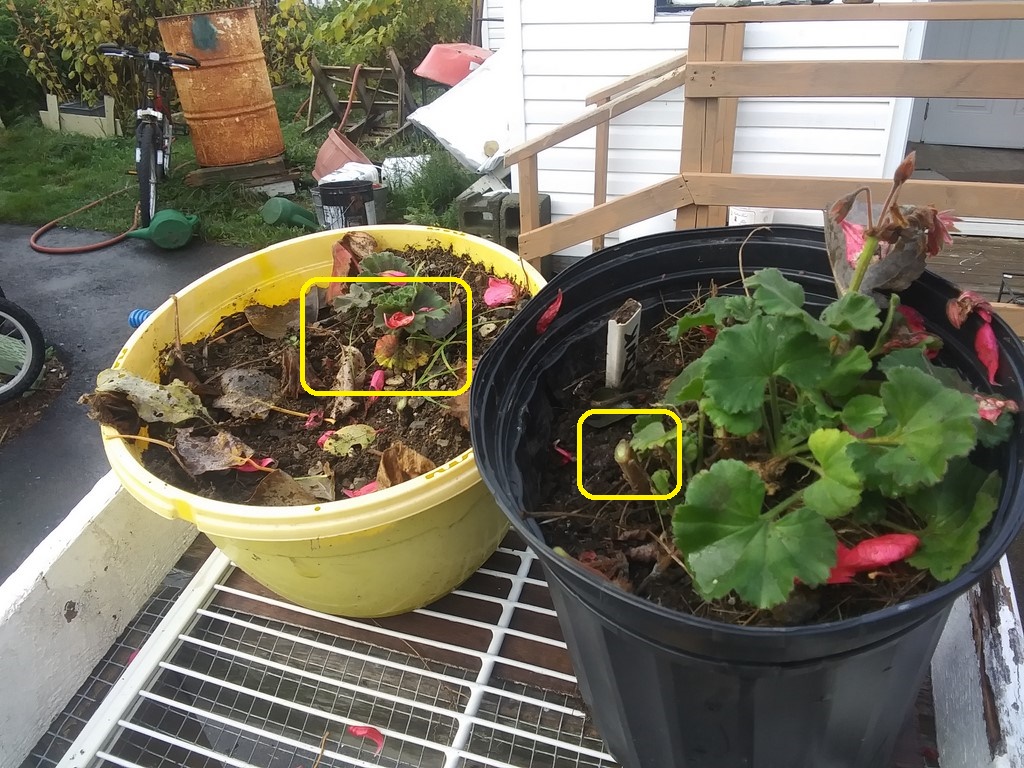
This year I had two pots which are the results of striking cuttings from last year's pot.
I have cut off the woody stems from the two pots as you can see in the image. These two pots will be brought indoors before the first frost (October 31st) and held in my 10ļc garden room for the winter.
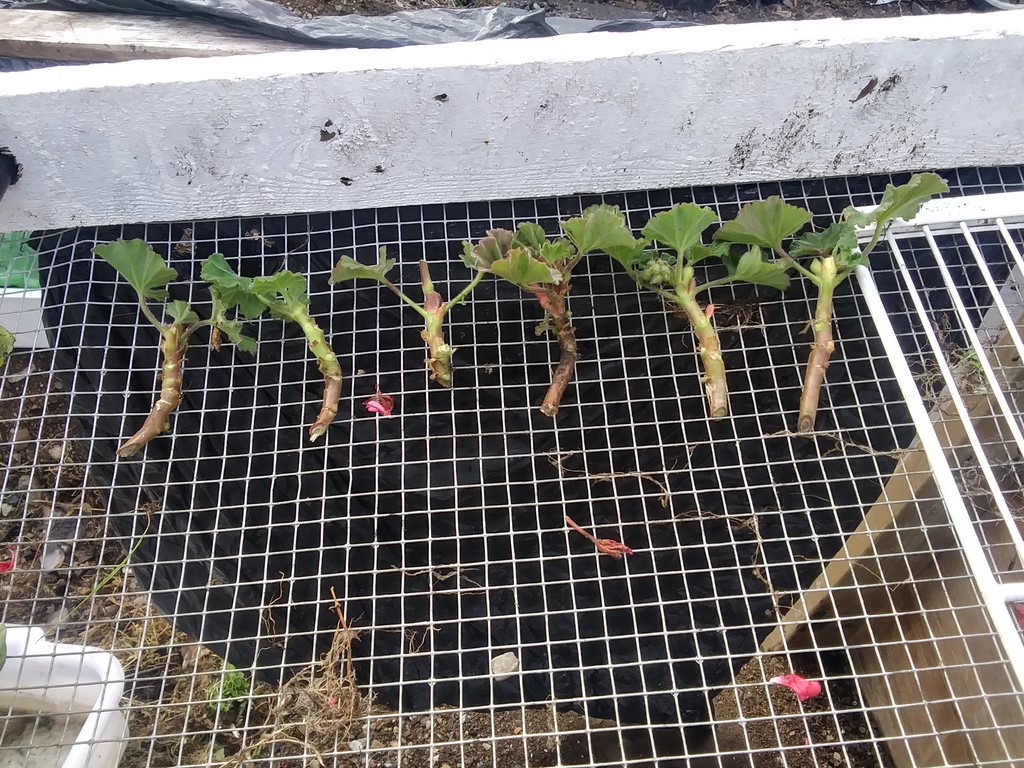
These six cuttings, with all but the top leaves stripped, will be placed in a jar of water in an attempt to sprout roots. Some sources say to strike them directly in soil, but I am leery of internet advice when it comes to plants. The published method may work well in Florida, but web pages rarely state their regional origin.
I reason that IF I can get them to strike in water THEN I will be able to see which of the six cuttings sends out roots and which don't. So then I will pot only those cuttings that are successful, rather than have, perhaps, a half-dozen pots of soil taking up space, with slowly rotting stems within.
Calibrachoa
In October I was given a ten-inch hanging basket with a sparse woody twigged shrub. I believe the plant is Calibrachoa . The plant would have been tossed in the garbage had I not been present. I am known for resurrecting plants and propagating plants.

Not a good photo, I know, but the plant has hundreds of small twigs, so I can make several attempts to strike cuttings this winter.
In December I decided to re-pot the plant. Itís soil had grown very dry. Then I discovered that there was practically no soil at all; the plant was growing in a matrix of peat moss and polystyrene beads. I trimmed away half the roots and repotted the remaining ďballĒ in a pot of real soil, soaked the pot overnight, drained it, and watched it dry.
I have not yet (January) thrown the plant onto the compost heap. I have great faith in lifeís struggle to maintain itself and have hopes that within a month or so fresh young shoots will appear.
We shall see Ö
Sedum
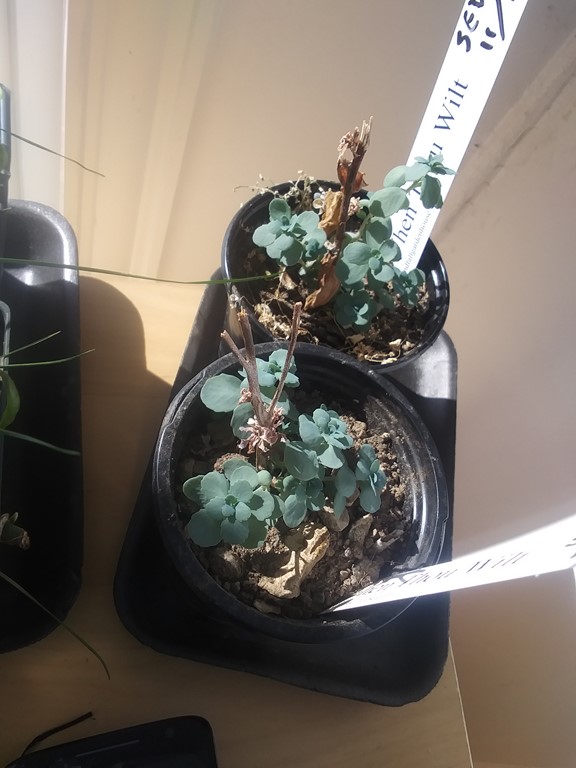
Two pots of Sedum waiting to be set as an assignment for Deena.
Creepers
Here are two philodendron-like plants. Ion each case the parent plant is to the left of the image.
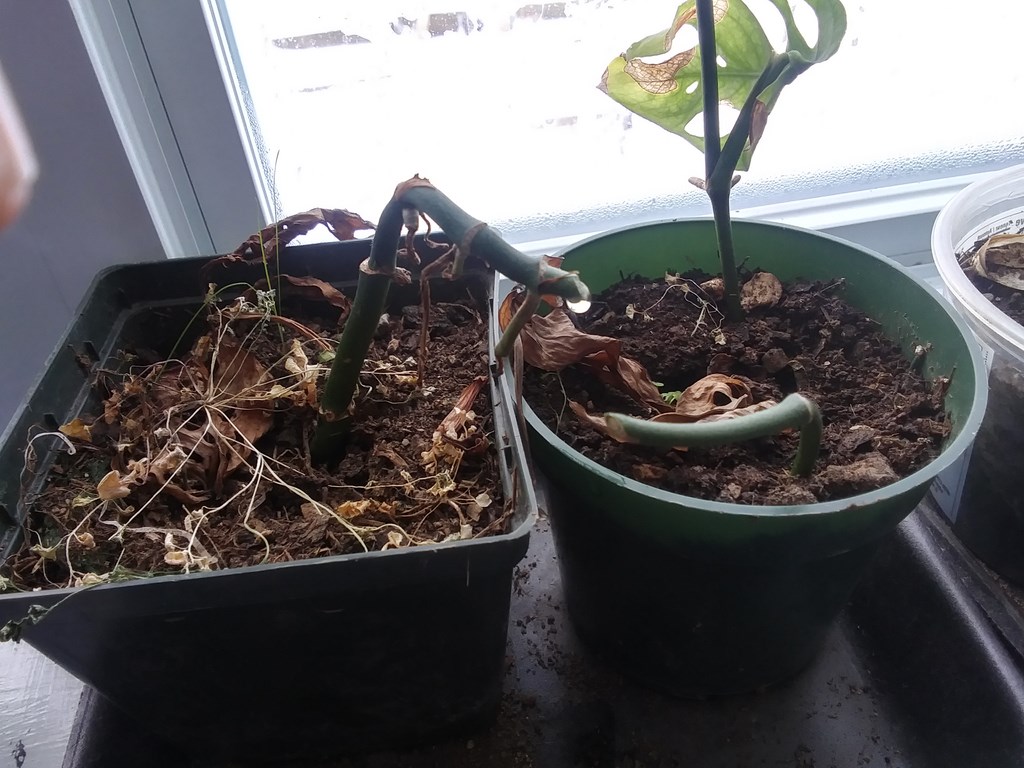
Three months ago I noticed that this plant had sent out a relatively long vine. I introduced a second pot and pushed (with my finger) the central part of stem into the moist earth of the second pot of soil.
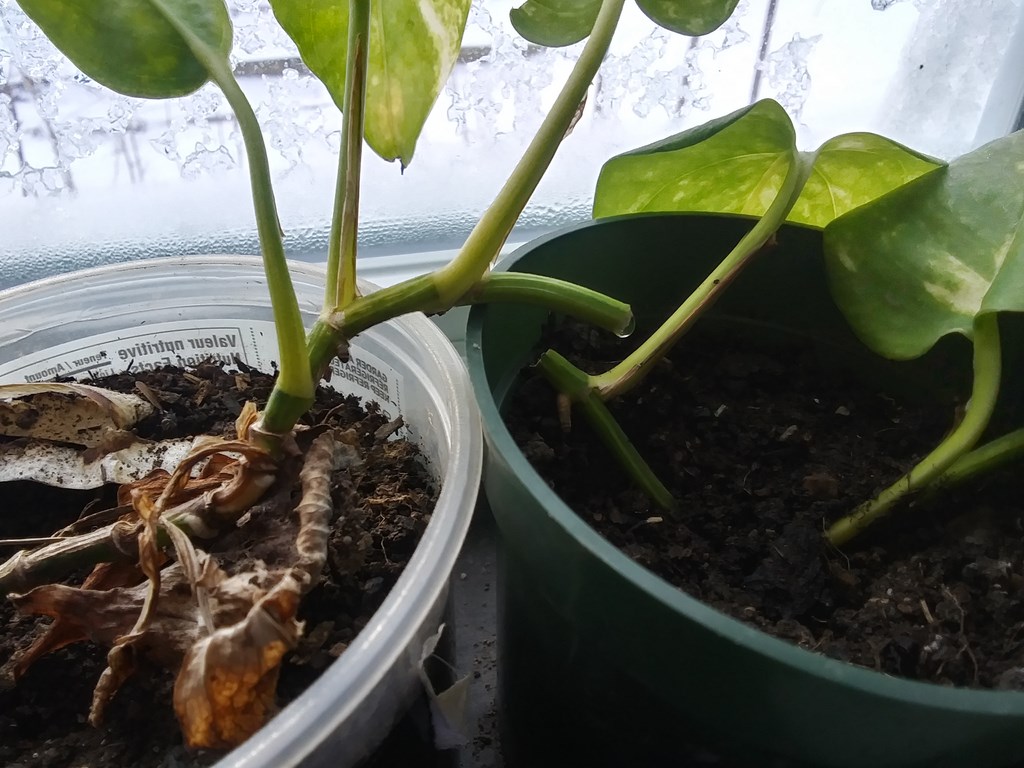
Same for this plant
I believe that the tip of the creeper, in the right hand sides of this image, have developed enough of a root system to nourish the tip of the creeper.
You can see a drop of sap emitted from the parent plant in each case.
Creeper Plants
Monday, March 20, 2023
I began growing creeper plants in Gawler, South Australia back in the mid seventies. I do it today as much as I can.
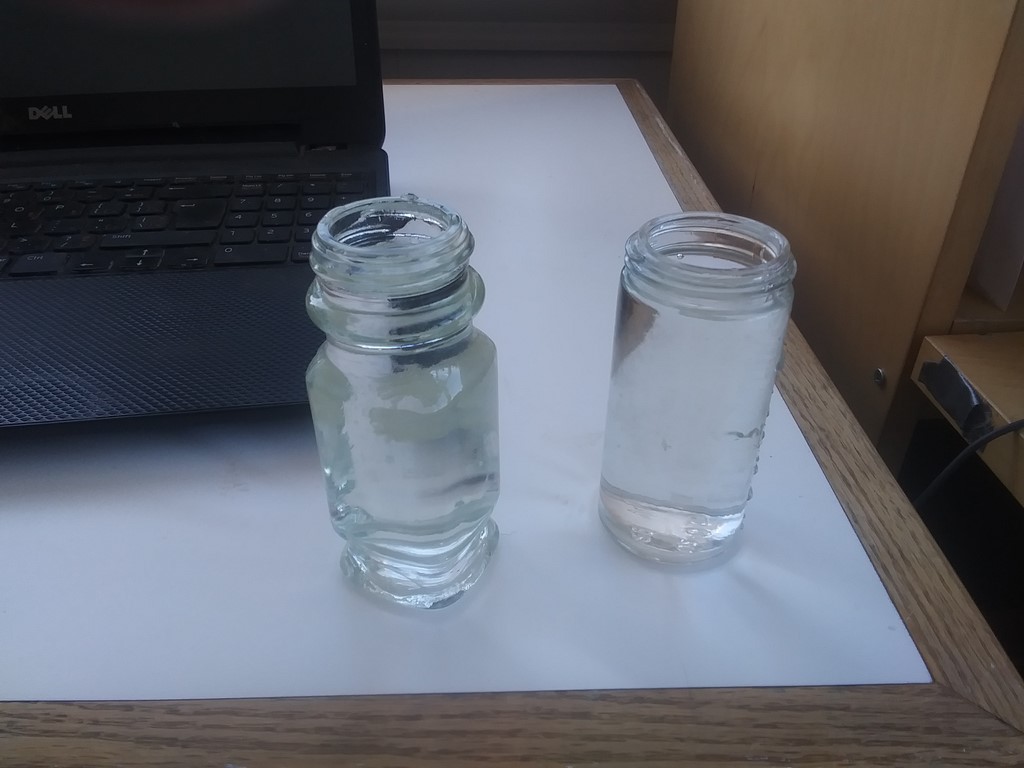
Start with one small jar. I am using two jars here because single jars can get lonely (grin!)
These jars once held spices. The jars come with plastic lids. Do not throw away the lids, hang on to them. You will find a use for them later.
You can use any small container, pill bottles, mugs with broken-off handles, but for this essay I am using clear glass jars so that I can show the development of the plants.
I fill the jars with tap water and usually let them stand for a day, to bring the water and jars to room-temperature.
But today I did not let them stand for a day, so if this works with tap-water near-freezing, it is going to work for you with tap water at room temperature.

I select the wildest plant of the species/variety I want to propagate. This is the candidate.
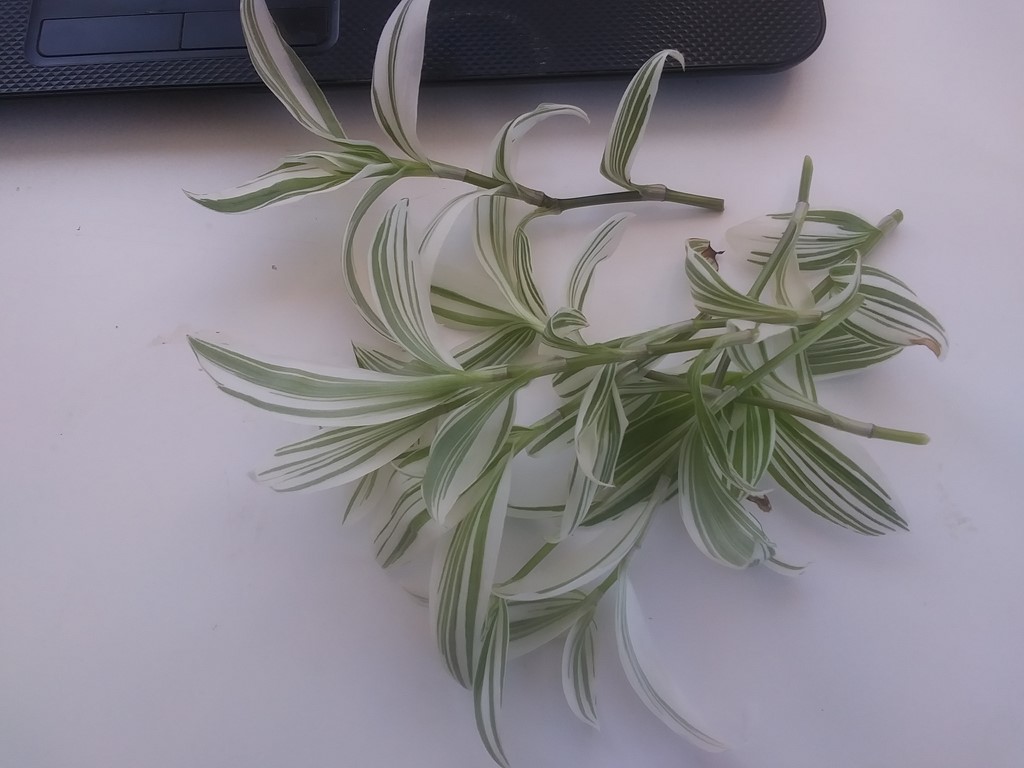
I have snapped off eight long stalks. The victim is now less unruly.
Why eight?
Four cuttings per bottle.
Why four?
If I have four cuttings sending out roots, then I can plant them four to a pot, which means the pot will get a head-start to becoming bushy.
How long are these stalks?
About four inches.
Now that doesnít sound like much, but reflect that the parent plant started off as a four inch cutting from its parent plant, which itself started off as a four-inch cutting, and so on back through time.
How long have plants populated the Earth?
Plant life began colonizing land 500 million years ago , but this particular plant? I do not know.
Letís assume that it began only 250,000,000 years ago. I can harvest four generations of cuttings four times a year, so one billion generations.
Each of four inches.
So todayís cuttings come from a plant that could be almost 4,000 miles LONG!
How wonderful is plant life.

I trim the lower two leaves from each stalk. This leaves two leafless nodes at the foot of each stalk.

Hang on to the leaves. They contain valuable nutrient molecules for plants. I drop my dead leaves back into the pot from which they came. Every little bit helps.

I thrust four stalks into each jar, and walk away.
These jars are sitting on a computer table against the south-facing wall of my study. They will receive sunlight through the double-glazed windows for about six hours each day.
Sunlight supplies the photons used in photosynthesis, by which plants make energy for roots and leaves.
You might experiment, if you have enough cuttings (one per jar) by placing each jar in a different part of your dwelling to determine the best spot for propagation at this time of year. Keep a diary!
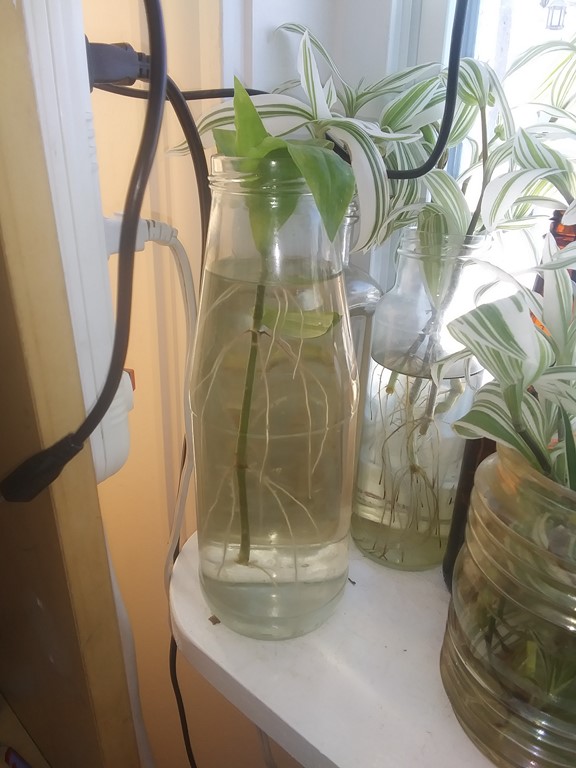
We are headed here. These two jars were set up as long ago as a month, and have enough roots now to warrant planting in pots of soil.
Tuesday, March 21, 2023
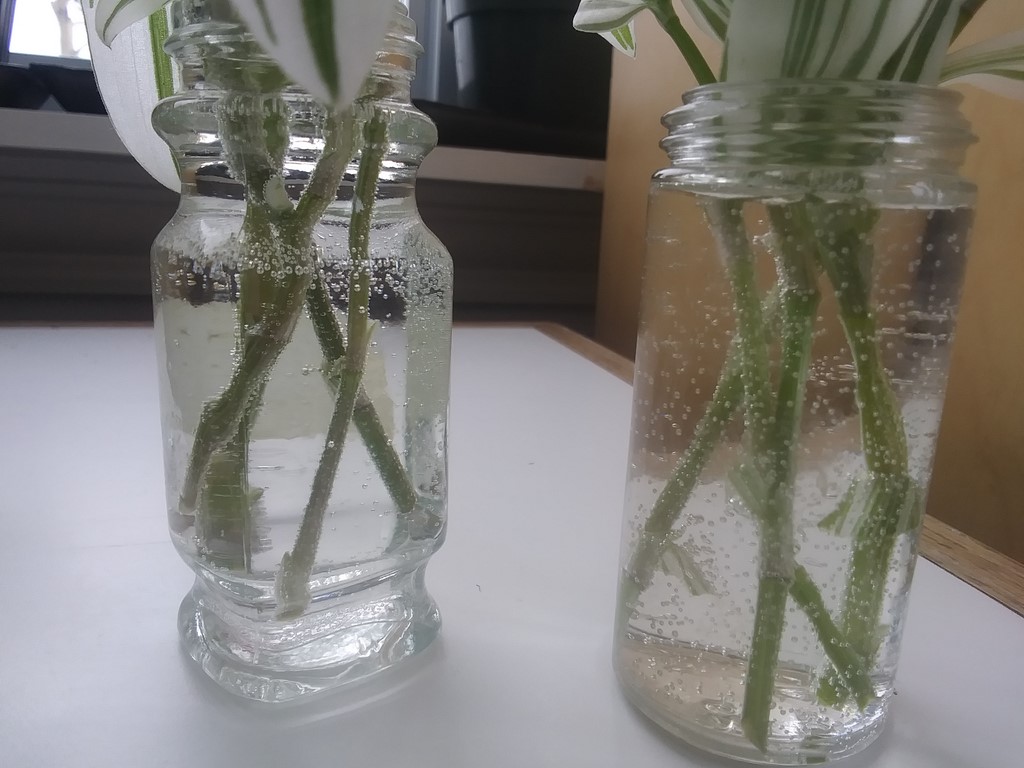
I donít expect to see a hint of roots for at least a week, but I will take a set of daily photos for now.
Wednesday, March 22, 2023

The time taken for roots to develop will depend on the plant itself, the health of the cuttings, the ambient temperature, even the time of year. And yes, the location where your cutting jars are held.
All the more reason to keep a diary!
Thursday, March 23, 2023
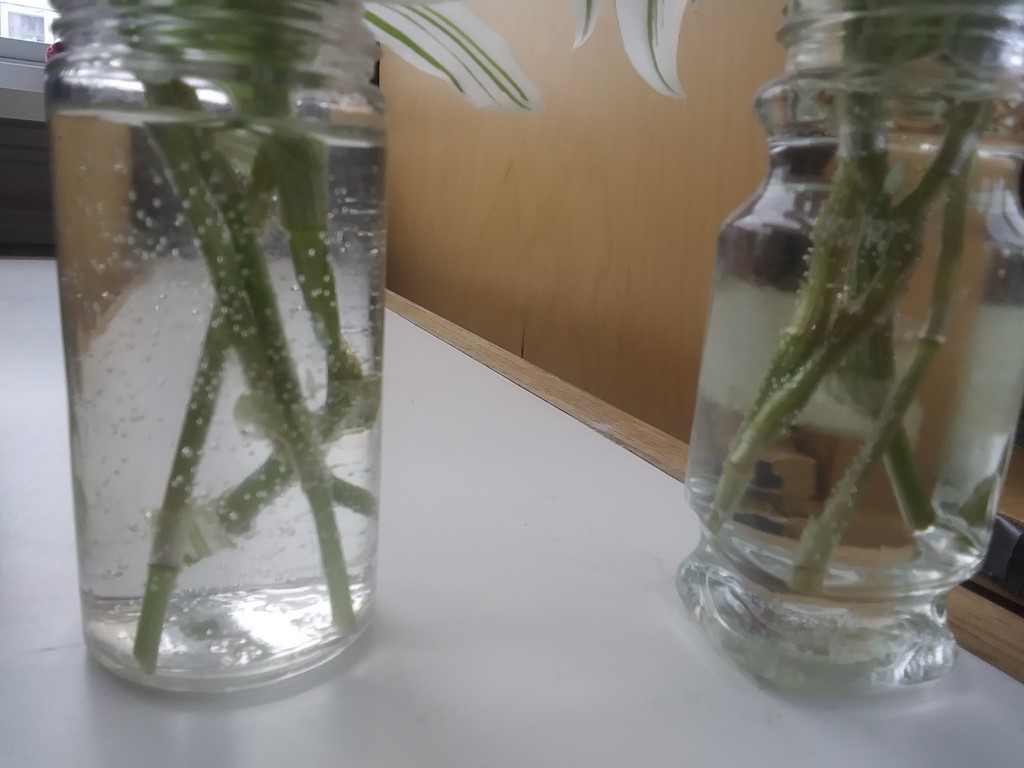
Saturday, March 25, 2023

Sunday, March 26, 2023
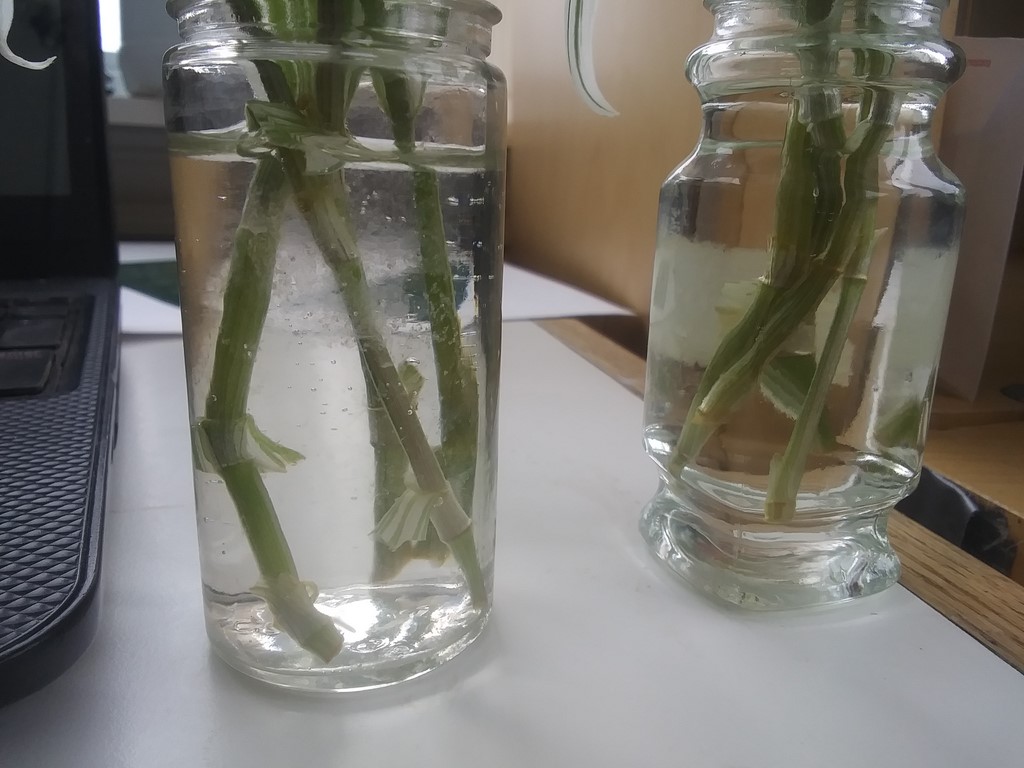
Monday, March 27, 2023

Here we are at day seven, One week ago today I thrust the stalks into the jars of water, and we have roots. Tender roots to be sure, but roots that will send nourishment to the leaves.

Details of the roots.
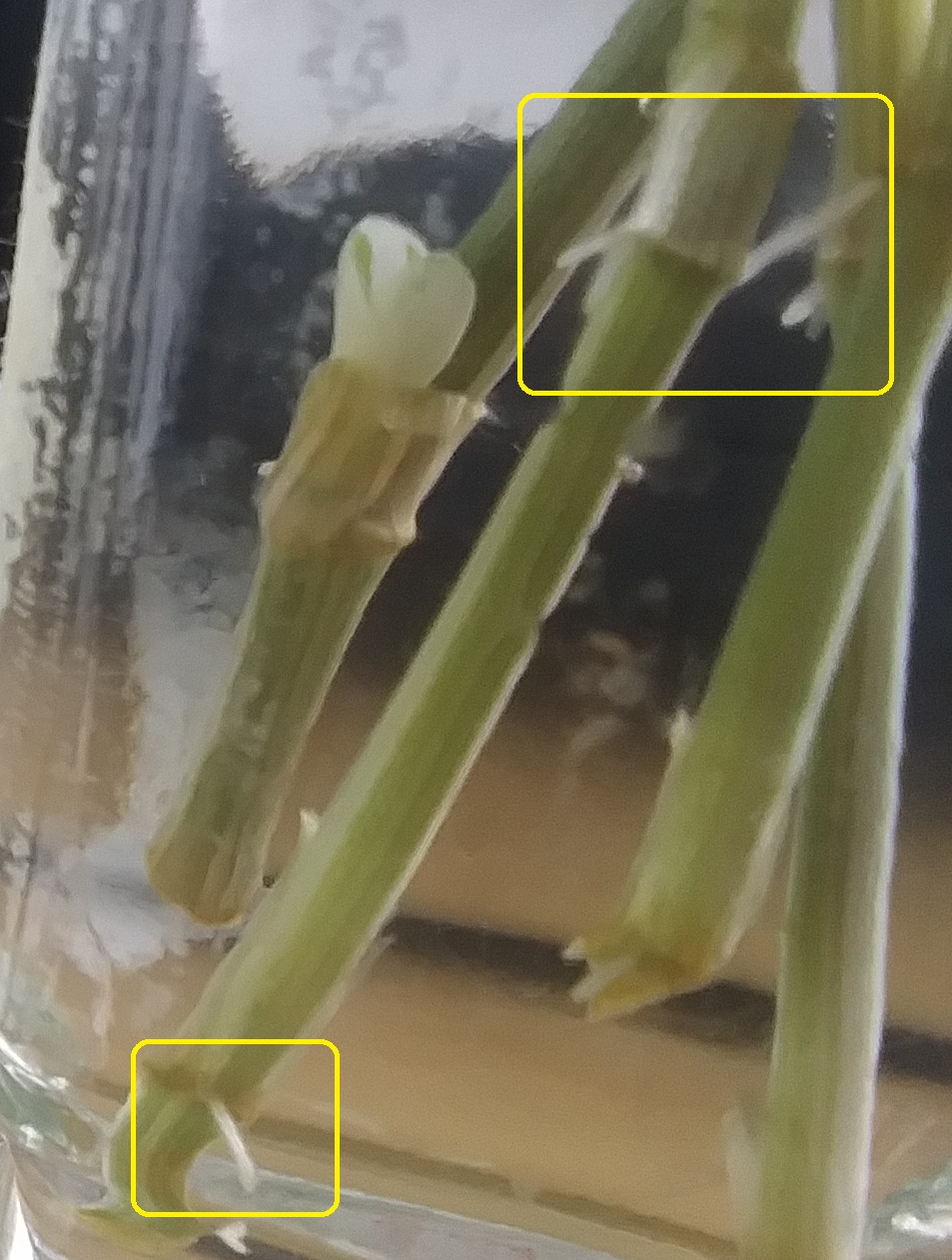
Details of the roots.
Tuesday, March 28, 2023
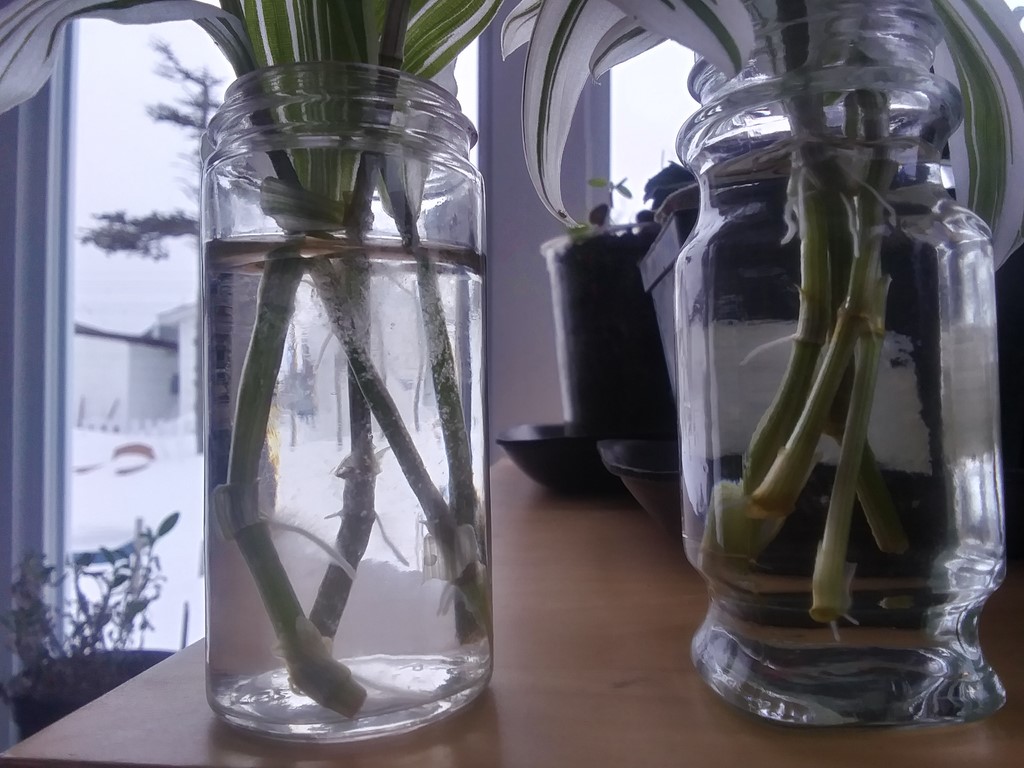
No need for zoom-shots from now on.

These cuttings were started less than two months ago and are already in blossom. I suspect that the lengthening of days, which is at a maximum this month, accounts for this unexpected spurt in development.
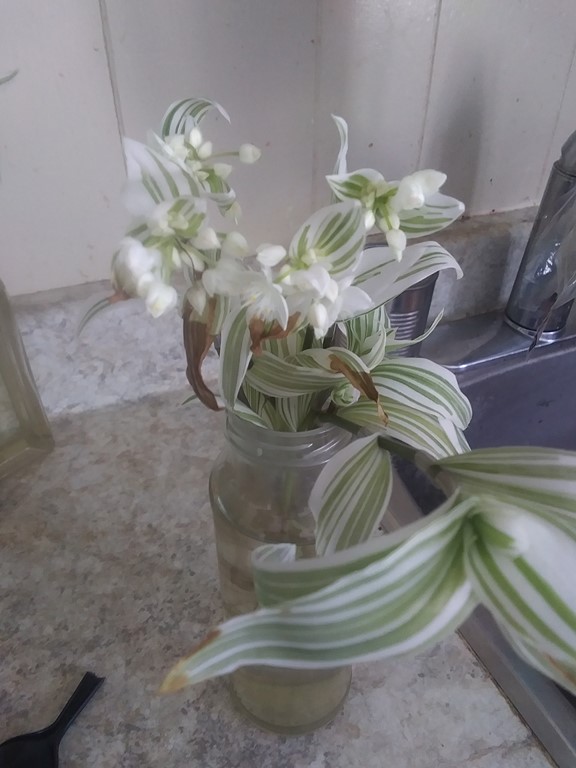
Another photo of the blossoms. I am so proud!
Monday, April 03, 2023

On the left hand side, the plant is devouring much water; on the right-hand side, the roots descend to the base of the jar. At this time, just two weeks in, I could pot these eight stalks and start another eight cuttings.
Monday, April 10, 2023
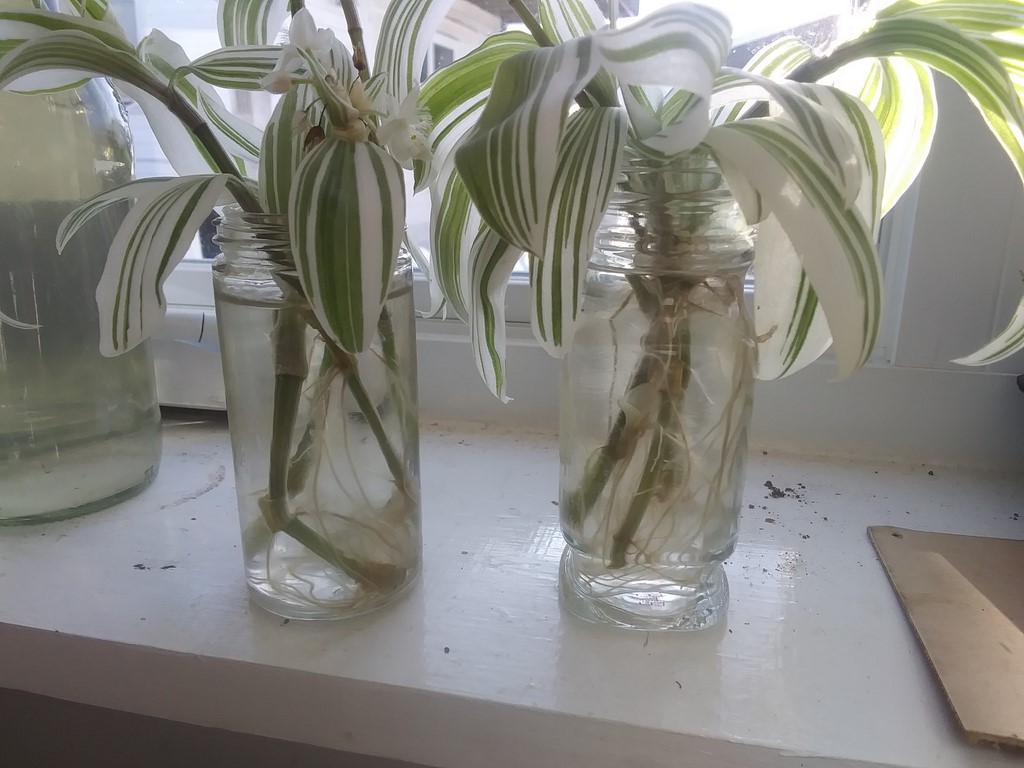
Here we are, at three weeks (in winter time), ready to transplant.
Jade Plants

Jade plants have to be the easiest and most prolific plants I have met, apart from Dandelions .
Jade is a succulent (think ďcactusĒ) with rubbery leaves. In the photo above, some leaves have dropped from the plant and landed on some soil.
I have counted seven dropped leaves; you may see more.
I have counted twelve new teeny-tiny jade plants that have sprouted from the stems of the fallen leaves; you may see more.
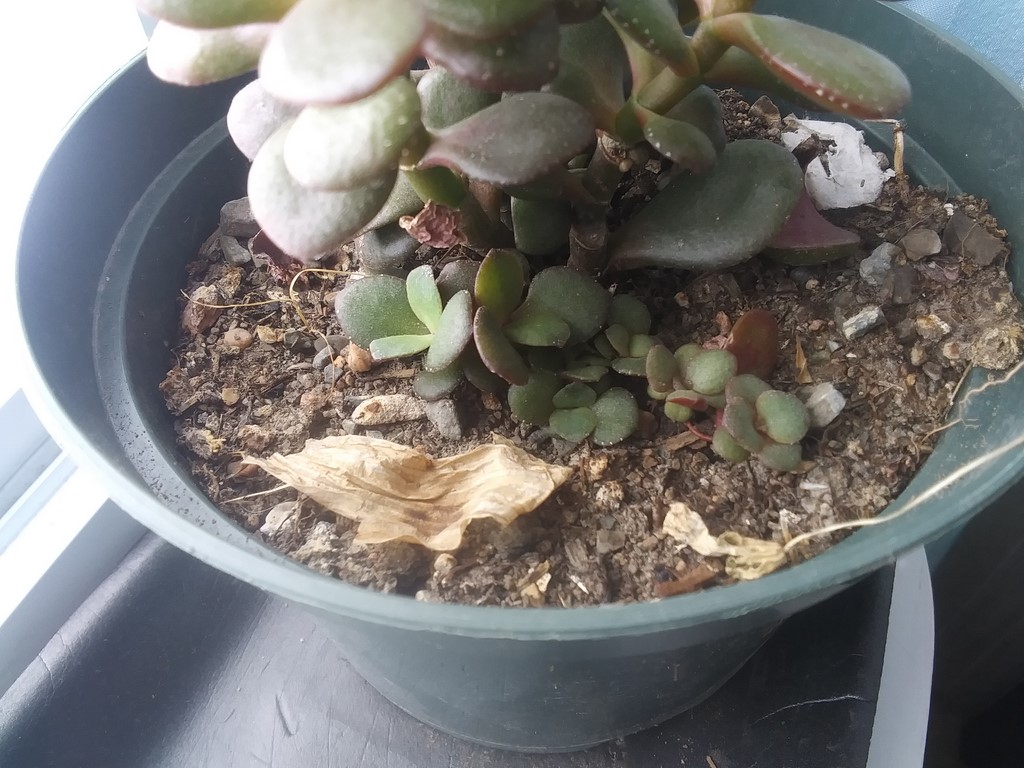
Another example. Eleven new plants, and please note that in both these examples I did NOTHING. The leaves fell downwards under the influence of gravity.
Whatís more I donít have to water these plants; almost. Twice a year I give them a twelve-hour soak in a tub of room-temperature water, drain them for twelve hours, and weíre done!
So the next time you are in an office or in someoneís house, if you Accidentally walk too close to a jade plant and some leaves fall off, donít let the place get untidy. Leave the floor as you found it, by scooping up the fallen leaves and dropping them into your pocket. Thatís what I did.
The leaves will survive the trip home.
At home, fill a one-litre well-drained pot with soil. No need to pack it down, but a couple of taps on the table will settle loose soil and allow you to add a bit more.
Take each leaf, and place it loosely atop the soil so that the pretty part of the leaf is uppermost. This will mean that the slight curve of the stalk aims itself towards the ground. It may be in contact with the soil.
Then walk away.
New plantlets should appear within two months.
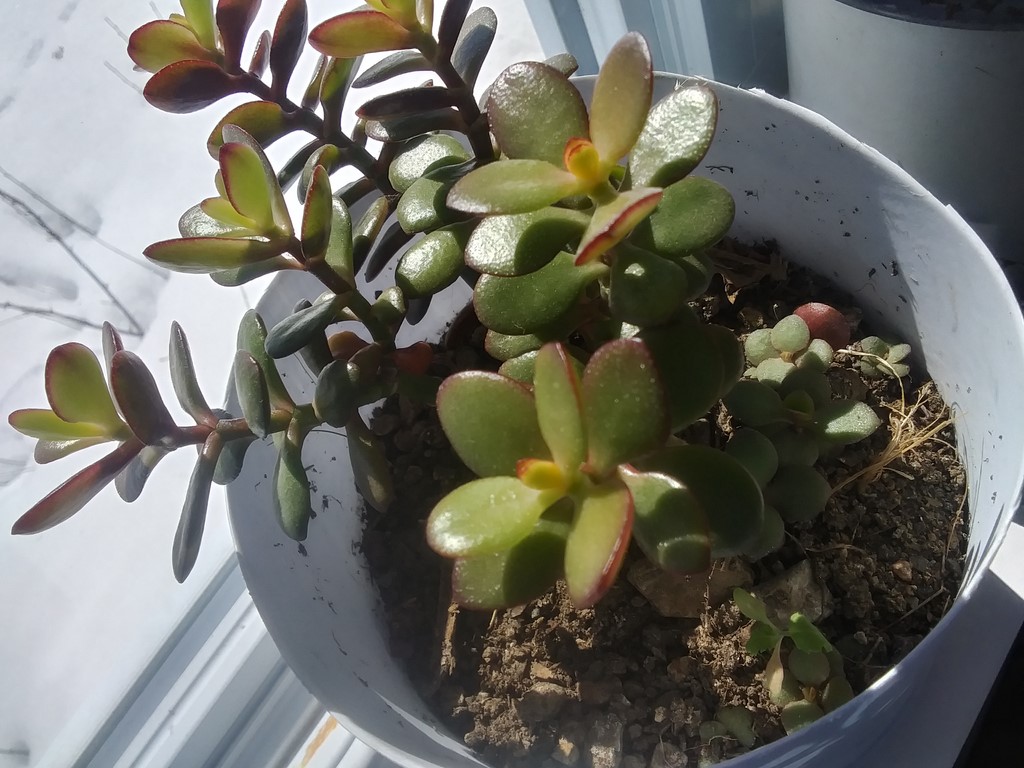
A pot of Jade, with babies.
Monday, April 03, 2023
My indoor plant stock grows wildly.

I have four tomato paste cans of jade plants a-seedling. Stab each leaf in soil and leave it alone is my proven method. Within two months you have jade plants. Why tomato paste cans? Because nowadays the body of the can is an extrusion from the base, so there is no easy way of making drainage holes.
Since Jade Plants donít need much water at all, I can hand them out and just tell people not to water them except a half-cup of water every six months. No drainage, no leaks, no mess. And it saves me the work of punching holes in the cans.
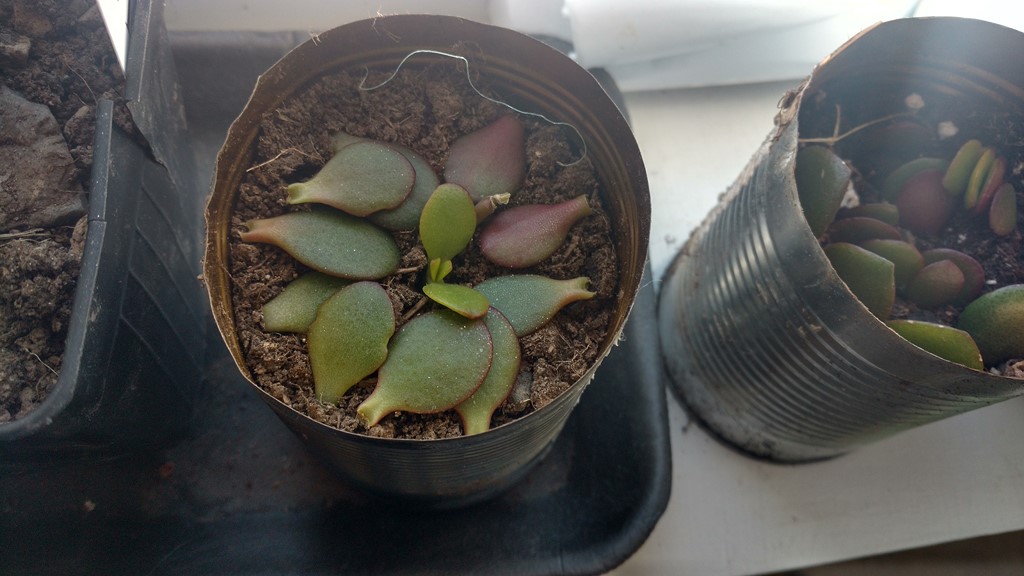
I am trialing the flat-leaf method as well as the stabbed-in-soil method.
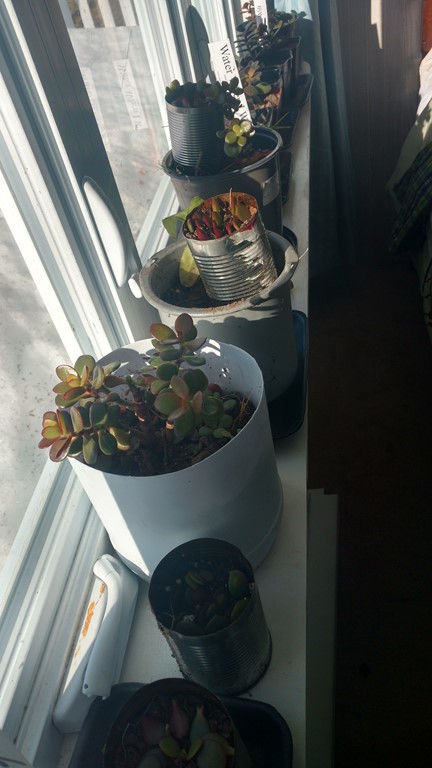
Part of my stock, gracing my bedroom window sill to greet the early rays of sunshine.
Sunday, April 09, 2023
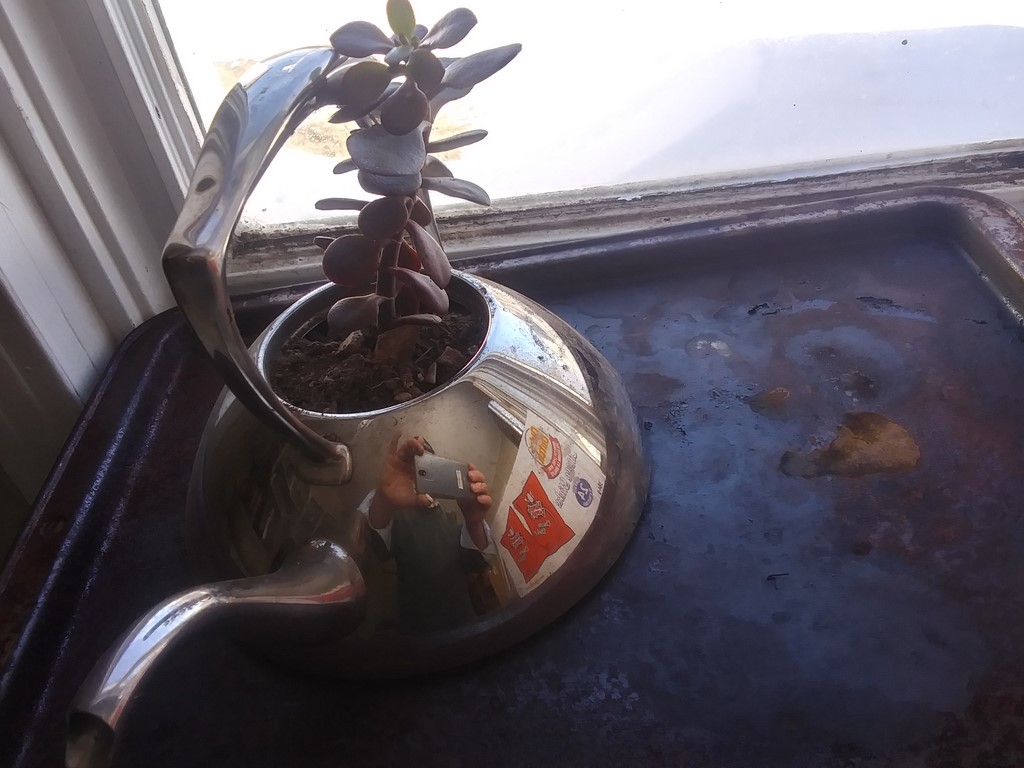
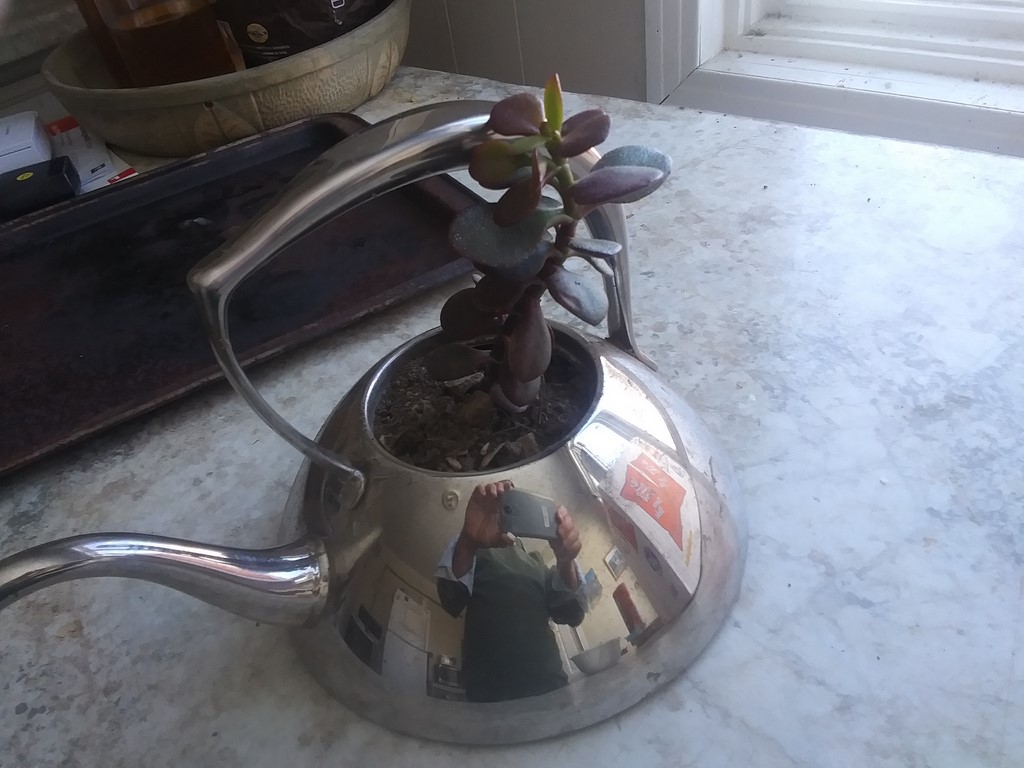
I took an exiting cutting from a three-inch pot; the soil was dry, the roots extended to the base of the pot.
Into a flash teapot it went. The teapot has no drainage holes, but the soil was well-soaked.
709-218-7927 CPRGreaves@gmail.com Bonavista, Thursday, September 26, 2024 7:40 AM Copyright © 1990-2024 Chris Greaves. All Rights Reserved. |
|---|